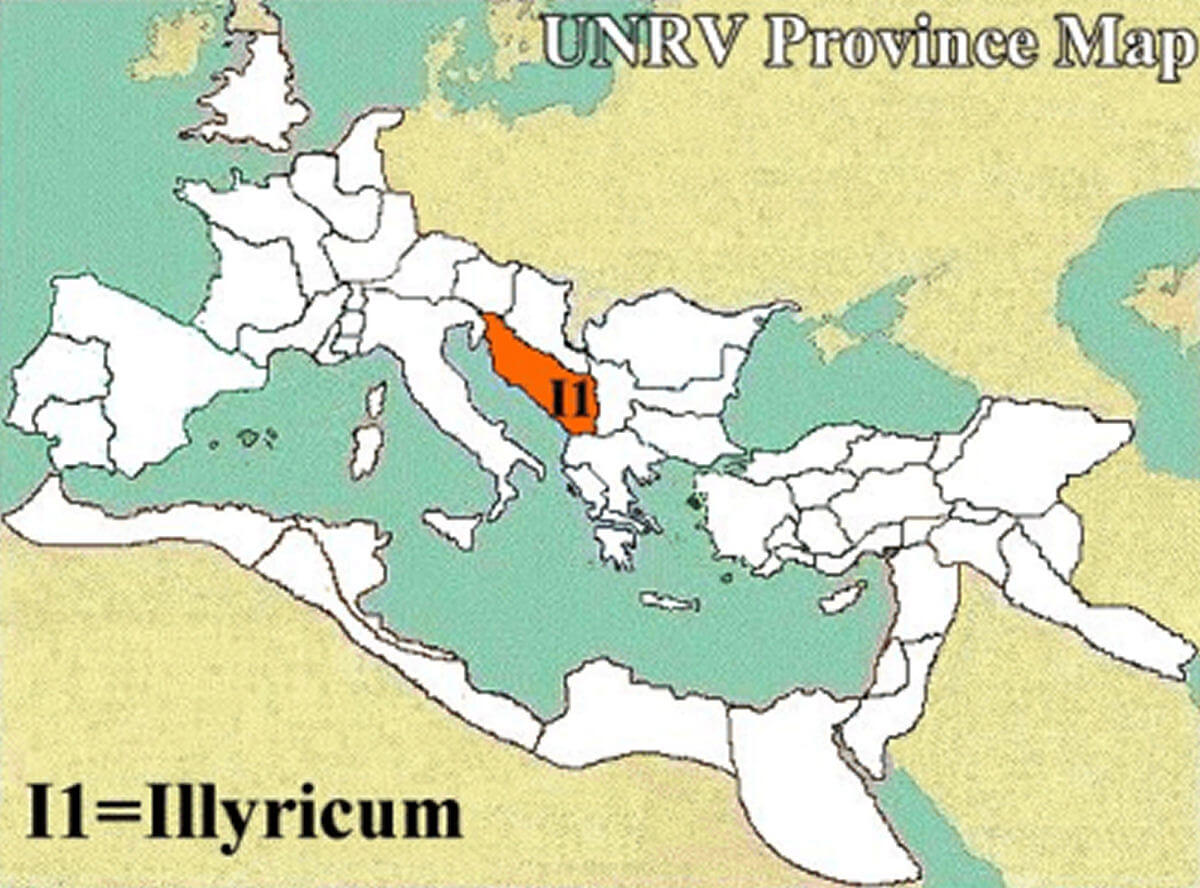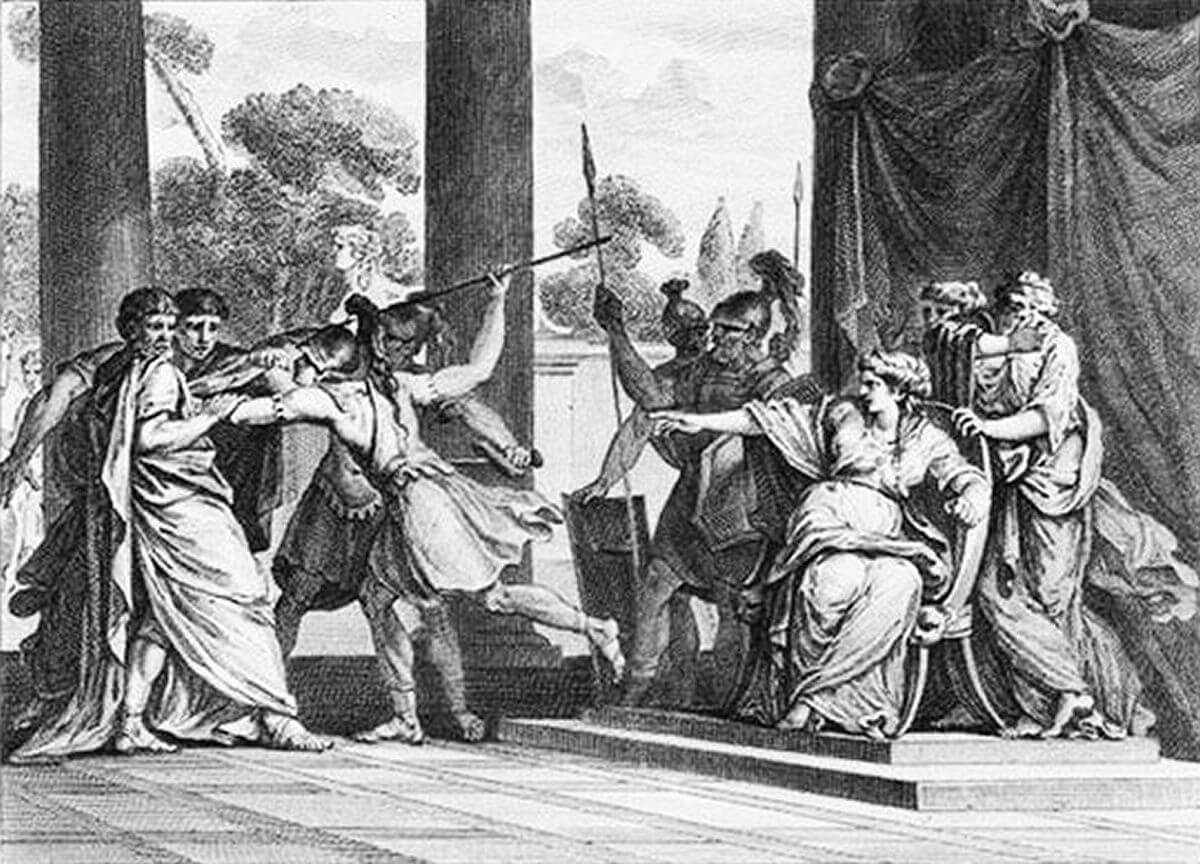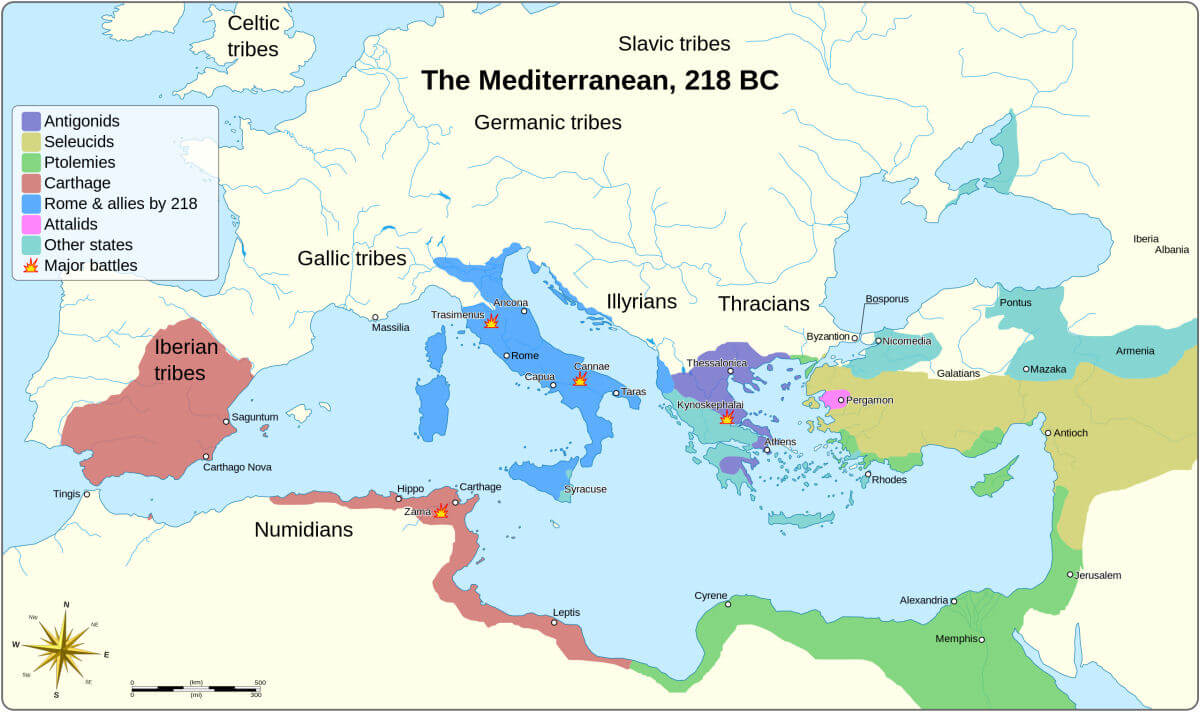First Illyrian War
As Rome and Carthage occupied each other in Sicily, Africa and throughout the Mediterranean region, Rome's northern neighbors began to gather strength and cause problems of their own.
In Illyria, King Agron, between the years 233 and 231 BC, had gathered a formidable fleet and started to sanction naval operations against various Greek city states. In 231 BC, Illyrian success was so great against the Aetolians, Polybius tells us, that he "made so merry that he caught a cough and died."

A map showing Illyricum (Illyria)
Agron was succeeded by his wife, Queen Teuta. The taste of success left by her husband encouraged her to sanction increased piracy in the Adriatic and Ionium seas. Towns up and down the Epirus and Achaea coasts were plundered, harassed and virtually under siege by sea.
Rome, having gained regional authority with its earlier victories over Pyrrhus and Carthage, and having built a powerful naval fleet as a result, was pleaded to by Greek merchants to quell the pirates. By 230 BC, even Italian and Roman trade routes were beginning to suffer, and Rome had no choice but to intervene.
The Senate, again according to Polybius, sent Gaius and Lucius Coruncanius to treat with Queen Teuta. She, as many of the early Roman conquest stories go, met the Roman envoys with indignation. The queen would only guarantee that her official forces would refrain from attacking Roman interests, but that she was not responsible for the actions of pirates.
After a heated exchange, the Romans left for home without a satisfactory agreement, but Teuta, still angry over the argument with the Romans, had one of the envoys killed en route.

"Queen Teuta orders the Roman ambassadors to be killed" by Augustyn Mirys (1700 - 1790)
Once again, Rome used a real (or perhaps fabricated) injustice as cause for war and expansion. With Macedonia - Illyricum's main regional ally - occupied in its own expansionist endeavors, and Carthage in the midst of quelling its own mercenary revolt, the timing was right to move north.
In 229 BC, Consul Gnaeus Fulvius Centumalus sailed for Illyria with a fleet of 200 quinqueremes (a new type of oared warship), while his co-Consul, Aulus Postumius, took legions by land. Fulvius initially attempted to relieve a siege of Corcyra by the Illyrians under the command of Demetrius of Pharos, but he was too late to prevent its success. However, recognizing the authority of the Roman military, Demetrius quickly handed the island over to Roman protection.
The fleet joined the legions at Apollonia and moved north into Illyrian territory. It cleared pirate vessels as it went, while the pressure of the army forced Teuta and Demetrius to abandon the sieges of Dyrrhachium and Issa. Both cities fell under the 'protection' of Rome, as well as several smaller towns along the coast. Teuta, meanwhile, had little choice but to give up her aggressive tactics and withdraw to her winter quarters.
In the spring of 228 BC, Illyricum sued for peace and received harsh terms. Teuta was forced to cede portions of her kingdom along the coast (120 miles) to Roman control, along with an unspecified tribute. Of more important concern to the issue of piracy, Illyrian fleets were no longer allowed to sail south of Lissus with more than two ships. Demetrius also accepted Roman terms and established Pharos as a client kingdom, forming a natural buffer with Macedonia.
The result of the First Illyrian War, while minor in comparison to other conflicts, had a direct impact on future relations with Macedonia and Carthage. Removing the Illyrian piracy threat from the Adriatic greatly improved Roman relations with the Greeks of Corcyra, Epidamnus and Appollonia, as well as the whole state of Achaea.
Macedonia, previously the superior power of the Greek world, was angered by Roman interference in what it considered to be its own affair. That anger would boil over into the Second Punic War, and develop into an alliance with Carthage, adding to Rome's concerns over the next century.
Second Illyrian War
After his defeat a decade earlier in 229 BC, Demetrius of Pharos waited for an opportunity to return Illyrian piracy to the Adriatic. By 219 BC, Roman conflict with the Celts of Cisalpine Gaul, and the beginning of the Second Punic War against Hannibal and Carthage, encouraged Demetrius to do just that. He constructed a fleet of 90 vessels and sailed south of Lissus, violating his earlier treaty and setting off war with Rome.

Goran tek-en, CC BY-SA 4.0, via Wikimedia Commons
The Mediterranean region in 218 BC
The Illyrian fleet first harassed Pylos, and though initially unsuccessful, he eventually took 50 enemy ships. With this addition, he moved quickly to the Cyclades, plundering as he went.
Despite Roman occupation in other theatres, they responded hastily by sending Lucius Aemilius and a fleet across the Adriatic.
With little difficulty, the still powerful Roman navy captured Dimale, an Illyrian stronghold, and continued towards Demetrius' home base of Pharos. With diversionary tactics in the harbor, Aemilius lured the Illyrians out of their encampment while landing the main force behind Pharos. A short battle was decided in favor of the Romans, but Demetrius escaped to his allies in Macedonia.
While Rome managed to clear the Adriatic of Illyrian pirates once more, and strengthen its hold on the coastal region of Illyricum, little else could be accomplished. With Hannibal and Carthage looming as a spectre, the conquest of Illyria would not be completed until 168 BC. Even still, it would take another 40 years to organize as a province and another century again (9 AD) before the whole of the Illyrian and Dalmatian tribes were under Roman control.
Punic Wars and Expansion - Table of Contents
- First Punic War
- Illyrian Wars
- Conquest of Cisalpine Gaul
- Second Punic War
- First Macedonian War
- Second Macedonian War
- Syrian War
- Third Macedonian War
- Fourth Macedonian War and the Achaean War
- Third Punic War
Did you know...
It was Rome's clever invention of the corvus that inflicted the most damage during the earlier stages of the war. The corvus provided an instant bridge between ships, allowing Roman troops to quickly board Carthaginian vessels.



